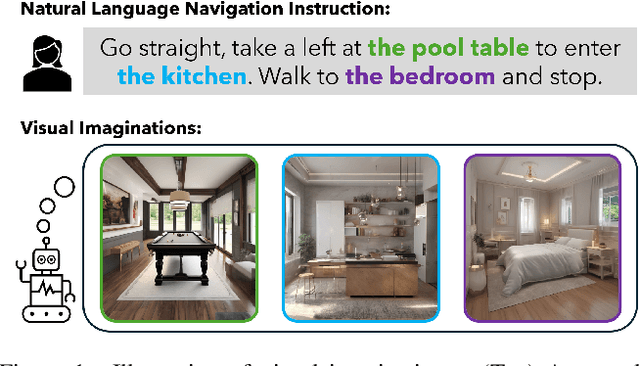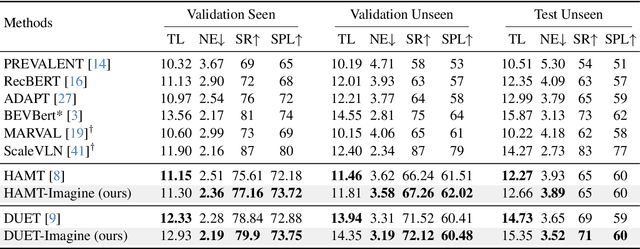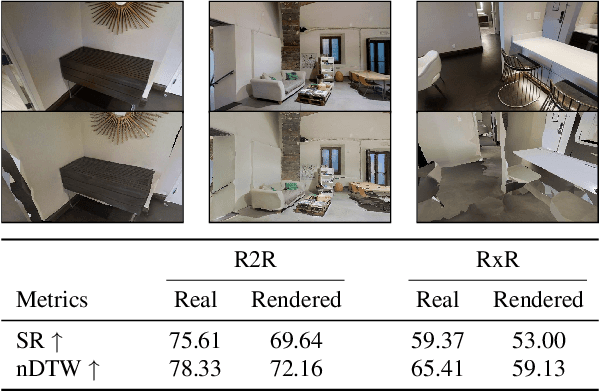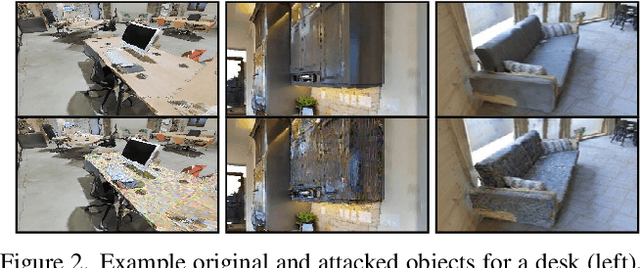Stefan Lee
Calibrating MLLM-as-a-judge via Multimodal Bayesian Prompt Ensembles
Sep 10, 2025Abstract:Multimodal large language models (MLLMs) are increasingly used to evaluate text-to-image (TTI) generation systems, providing automated judgments based on visual and textual context. However, these "judge" models often suffer from biases, overconfidence, and inconsistent performance across diverse image domains. While prompt ensembling has shown promise for mitigating these issues in unimodal, text-only settings, our experiments reveal that standard ensembling methods fail to generalize effectively for TTI tasks. To address these limitations, we propose a new multimodal-aware method called Multimodal Mixture-of-Bayesian Prompt Ensembles (MMB). Our method uses a Bayesian prompt ensemble approach augmented by image clustering, allowing the judge to dynamically assign prompt weights based on the visual characteristics of each sample. We show that MMB improves accuracy in pairwise preference judgments and greatly enhances calibration, making it easier to gauge the judge's true uncertainty. In evaluations on two TTI benchmarks, HPSv2 and MJBench, MMB outperforms existing baselines in alignment with human annotations and calibration across varied image content. Our findings highlight the importance of multimodal-specific strategies for judge calibration and suggest a promising path forward for reliable large-scale TTI evaluation.
Towards Scalable Schema Mapping using Large Language Models
May 30, 2025Abstract:The growing need to integrate information from a large number of diverse sources poses significant scalability challenges for data integration systems. These systems often rely on manually written schema mappings, which are complex, source-specific, and costly to maintain as sources evolve. While recent advances suggest that large language models (LLMs) can assist in automating schema matching by leveraging both structural and natural language cues, key challenges remain. In this paper, we identify three core issues with using LLMs for schema mapping: (1) inconsistent outputs due to sensitivity to input phrasing and structure, which we propose methods to address through sampling and aggregation techniques; (2) the need for more expressive mappings (e.g., GLaV), which strain the limited context windows of LLMs; and (3) the computational cost of repeated LLM calls, which we propose to mitigate through strategies like data type prefiltering.
Do Visual Imaginations Improve Vision-and-Language Navigation Agents?
Mar 20, 2025



Abstract:Vision-and-Language Navigation (VLN) agents are tasked with navigating an unseen environment using natural language instructions. In this work, we study if visual representations of sub-goals implied by the instructions can serve as navigational cues and lead to increased navigation performance. To synthesize these visual representations or imaginations, we leverage a text-to-image diffusion model on landmark references contained in segmented instructions. These imaginations are provided to VLN agents as an added modality to act as landmark cues and an auxiliary loss is added to explicitly encourage relating these with their corresponding referring expressions. Our findings reveal an increase in success rate (SR) of around 1 point and up to 0.5 points in success scaled by inverse path length (SPL) across agents. These results suggest that the proposed approach reinforces visual understanding compared to relying on language instructions alone. Code and data for our work can be found at https://www.akhilperincherry.com/VLN-Imagine-website/.
GABAR: Graph Attention-Based Action Ranking for Relational Policy Learning
Dec 06, 2024Abstract:We propose a novel approach to learn relational policies for classical planning based on learning to rank actions. We introduce a new graph representation that explicitly captures action information and propose a Graph Neural Network architecture augmented with Gated Recurrent Units (GRUs) to learn action rankings. Our model is trained on small problem instances and generalizes to significantly larger instances where traditional planning becomes computationally expensive. Experimental results across standard planning benchmarks demonstrate that our action-ranking approach achieves generalization to significantly larger problems than those used in training.
Hijacking Vision-and-Language Navigation Agents with Adversarial Environmental Attacks
Dec 03, 2024



Abstract:Assistive embodied agents that can be instructed in natural language to perform tasks in open-world environments have the potential to significantly impact labor tasks like manufacturing or in-home care -- benefiting the lives of those who come to depend on them. In this work, we consider how this benefit might be hijacked by local modifications in the appearance of the agent's operating environment. Specifically, we take the popular Vision-and-Language Navigation (VLN) task as a representative setting and develop a whitebox adversarial attack that optimizes a 3D attack object's appearance to induce desired behaviors in pretrained VLN agents that observe it in the environment. We demonstrate that the proposed attack can cause VLN agents to ignore their instructions and execute alternative actions after encountering the attack object -- even for instructions and agent paths not considered when optimizing the attack. For these novel settings, we find our attacks can induce early-termination behaviors or divert an agent along an attacker-defined multi-step trajectory. Under both conditions, environmental attacks significantly reduce agent capabilities to successfully follow user instructions.
You Never Know: Quantization Induces Inconsistent Biases in Vision-Language Foundation Models
Oct 26, 2024Abstract:We study the impact of a standard practice in compressing foundation vision-language models - quantization - on the models' ability to produce socially-fair outputs. In contrast to prior findings with unimodal models that compression consistently amplifies social biases, our extensive evaluation of four quantization settings across three datasets and three CLIP variants yields a surprising result: while individual models demonstrate bias, we find no consistent change in bias magnitude or direction across a population of compressed models due to quantization.
Language-Informed Beam Search Decoding for Multilingual Machine Translation
Aug 11, 2024Abstract:Beam search decoding is the de-facto method for decoding auto-regressive Neural Machine Translation (NMT) models, including multilingual NMT where the target language is specified as an input. However, decoding multilingual NMT models commonly produces ``off-target'' translations -- yielding translation outputs not in the intended language. In this paper, we first conduct an error analysis of off-target translations for a strong multilingual NMT model and identify how these decodings are produced during beam search. We then propose Language-informed Beam Search (LiBS), a general decoding algorithm incorporating an off-the-shelf Language Identification (LiD) model into beam search decoding to reduce off-target translations. LiBS is an inference-time procedure that is NMT-model agnostic and does not require any additional parallel data. Results show that our proposed LiBS algorithm on average improves +1.1 BLEU and +0.9 BLEU on WMT and OPUS datasets, and reduces off-target rates from 22.9\% to 7.7\% and 65.8\% to 25.3\% respectively.
Point Cloud Models Improve Visual Robustness in Robotic Learners
Apr 29, 2024



Abstract:Visual control policies can encounter significant performance degradation when visual conditions like lighting or camera position differ from those seen during training -- often exhibiting sharp declines in capability even for minor differences. In this work, we examine robustness to a suite of these types of visual changes for RGB-D and point cloud based visual control policies. To perform these experiments on both model-free and model-based reinforcement learners, we introduce a novel Point Cloud World Model (PCWM) and point cloud based control policies. Our experiments show that policies that explicitly encode point clouds are significantly more robust than their RGB-D counterparts. Further, we find our proposed PCWM significantly outperforms prior works in terms of sample efficiency during training. Taken together, these results suggest reasoning about the 3D scene through point clouds can improve performance, reduce learning time, and increase robustness for robotic learners. Project Webpage: https://pvskand.github.io/projects/PCWM
FairDeDup: Detecting and Mitigating Vision-Language Fairness Disparities in Semantic Dataset Deduplication
Apr 24, 2024



Abstract:Recent dataset deduplication techniques have demonstrated that content-aware dataset pruning can dramatically reduce the cost of training Vision-Language Pretrained (VLP) models without significant performance losses compared to training on the original dataset. These results have been based on pruning commonly used image-caption datasets collected from the web -- datasets that are known to harbor harmful social biases that may then be codified in trained models. In this work, we evaluate how deduplication affects the prevalence of these biases in the resulting trained models and introduce an easy-to-implement modification to the recent SemDeDup algorithm that can reduce the negative effects that we observe. When examining CLIP-style models trained on deduplicated variants of LAION-400M, we find our proposed FairDeDup algorithm consistently leads to improved fairness metrics over SemDeDup on the FairFace and FACET datasets while maintaining zero-shot performance on CLIP benchmarks.
VLSlice: Interactive Vision-and-Language Slice Discovery
Sep 13, 2023



Abstract:Recent work in vision-and-language demonstrates that large-scale pretraining can learn generalizable models that are efficiently transferable to downstream tasks. While this may improve dataset-scale aggregate metrics, analyzing performance around hand-crafted subgroups targeting specific bias dimensions reveals systemic undesirable behaviors. However, this subgroup analysis is frequently stalled by annotation efforts, which require extensive time and resources to collect the necessary data. Prior art attempts to automatically discover subgroups to circumvent these constraints but typically leverages model behavior on existing task-specific annotations and rapidly degrades on more complex inputs beyond "tabular" data, none of which study vision-and-language models. This paper presents VLSlice, an interactive system enabling user-guided discovery of coherent representation-level subgroups with consistent visiolinguistic behavior, denoted as vision-and-language slices, from unlabeled image sets. We show that VLSlice enables users to quickly generate diverse high-coherency slices in a user study (n=22) and release the tool publicly.
 Add to Chrome
Add to Chrome Add to Firefox
Add to Firefox Add to Edge
Add to Edge